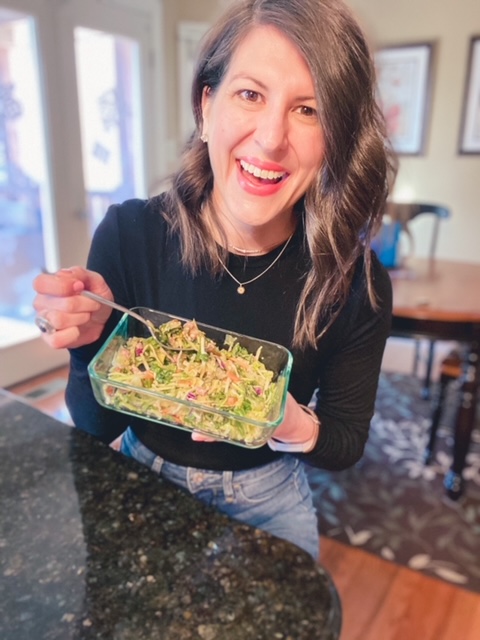Wellness: A Heart Healthy Diet

In this week’s post, I am going to talk specifically about diet changes that apply to those with high cholesterol, at risk for high cholesterol or heart disease. I want to first start by saying diet won’t fix everything. It won’t. Even with all the lifestyle changes, some of the patients that I see end up needing medication to treat their high cholesterol. Guess what, that’s OK! Remember that family history plays a role in these numbers and sometimes no matter how much a person changes their lifestyle, they still can’t get the numbers within normal range to decrease their risk for things like a heart attack or stroke.
A diet for high cholesterol should be a “heart-healthy diet”. This is a diet that has guidelines to prevent heart disease. If you have been following me for a while, you know that I often talk about healthy habits and healthy choices to create healthy behaviors. Then you have a healthy pattern for your life. That is what matters. It’s not the day to day counting and cutting.
A heart-healthy diet includes eating a variety of foods from ALL food groups. Remember, we want to focus on ADDING in healthy choices.

Overall, a heart healthy diet includes:
- Fruits
- Vegetables
- Whole grains
- Low-fat/fat free dairy
- Lean meats
- Beans and legumes
Yes, there are things we need to limit in a heart-healthy diet, but if you take the approach of what can I ADD instead of what do I need to CUT, it will be a lot easier.
What should we LIMIT (notice I didn’t say avoid):
- Saturated fats
- Trans fats
- Sodium
- Red meat
- Sugar-sweetened beverages

OK, now, let’s talk specifics. How can we ADD in the list of heart-healthy foods?
- Eat a variety of fruits and vegetables.
- Grow your own garden. My kids LOVE to watch the garden grow and eat all the veggies.
- Buy fresh, canned and frozen. Remember to rinse the canned vegetables to decrease the sodium intake and do not buy any frozen vegetables in sauces. I often buy the fruit cups for my kids to eat at the end of the week when the fresh fruit runs out (buy them in water or 100% juice, not syrup).
- Add a fruit to breakfast, lunch and dinner. Add a vegetable to each meal. Make an egg scramble in the morning with vegetables. Cut up fresh fruits and veggies to have ready for a snack. Eat a salad a day (I LOVE the bagged salads for this).
- Eat at least ½ your grains as whole grains that are rich in fiber.
- Switch your grains to whole grains when you can! Examples: whole-wheat spaghetti, brown rice, whole grain bread. Check food labels and look for “100% whole grain” and “high fiber”.
- Eat oatmeal in the morning (add in fruit and you have a fiber-rich, heart healthy breakfast)!
- Select low-fat or fat-free dairy.
- Cook with low-fat dairy products (milk, cream cheese, other cheeses).
- Switch your milk to 1% or skim.
- Eat low fat yogurt as part of breakfast, lunch or a snack.
- Consume lean meats.
- Chicken and fish are the best options here.
- Choose poultry that is skinless.
- Choose a healthier cooking method – bake, grill, broil or roast.
- Eat a variety of fish at least twice a week (especially fish containing omega-3 fatty acids – salmon, trout).
- Lean meats usually contain the words “round”, “loin” or “sirloin”.
- A serving of meat is 2-3 ounces.
- Add beans and legumes.
- Drain and rinse your beans.
- Add beans to soups, salads, and pasta.
- Eat veggies and hummus as a snack.
- Replace meat with beans/legumes (example: lentils for taco meat).

Now, a quick note on what to limit:
- Limit red meats. I recommend no more that 2 days a week.
- Limit saturated fats. These are foods like fatty beef, pork, butter, cheeses and other dairy (2% or whole fat).
- Limit trans fats. These are foods like fried foods and baked goods (cakes, cookies, crackers).
- Limit sodium to no more that 2300 mg/day (no more that 1500 mg/day if you have high blood pressure). Top sources of sodium: chicken, bread and rolls, pizza, sandwiches, soup, cold cuts and cured meats.
- Limit sugar-sweetened beverages (soda, juices, etc). Instead, drink water. Replace one of those with water a day each week until you can cut back on these beverages. Working for a dentist, I have to say, these are awful for your teeth too.
My goal is to get around to posting more of this information right here on the BLOG for all to see and benefit! My first post detailing cholesterol is only on my Instagram account (@angiebgrubbs), but I will get it up on the blog SOON! Life has just been crazy around here – new house, vacation, full time job, etc.
*Disclaimer: This post is for informational purposes ONLY and is not to replace medical advice. Please seek medical advice from your medical provider. This is general information.
SOURCE: American Heart Association
Lastly, I would LOVE to hear from you! Are these they type of posts you want to see more? Let me know in the comments below!
Stay well,
Angie
Related Posts
Wellness Wednesday: Stress Relief
How do you manage your stress? What do you do for yourself when times get…
November 6, 2020

Jan | 24th Jun 21
I enjoy your positive approach. I maintain a healthy weight with a mostly heart healthy diet but heredity is not in my favor. I don’t like having to take medication but I do understand why it is important. I enjoy summer because I also have a garden and even a small one yields lots of fresh vegetables!